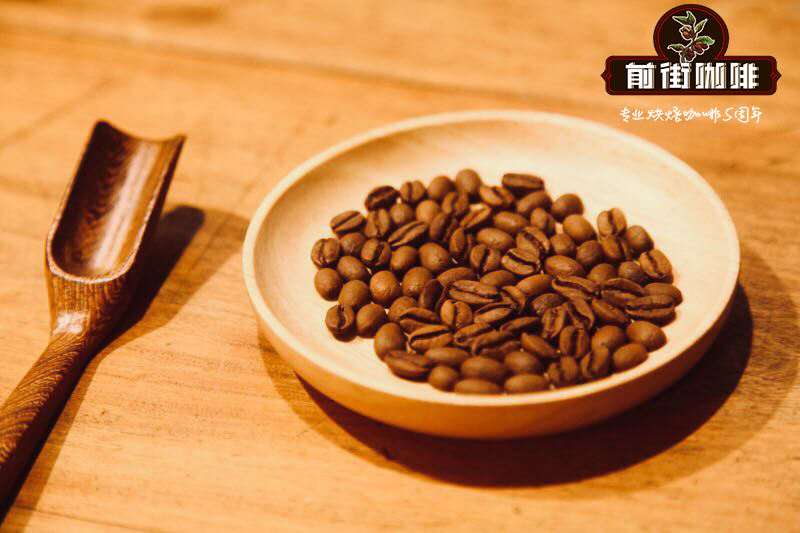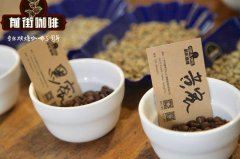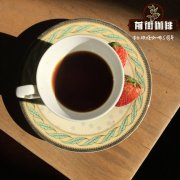Aberdare District, Kenya | Kahinduka Sendu Manor, Muraya Town, AA Water washing SL28/SL34

Professional coffee knowledge exchange more coffee bean information please follow the coffee workshop (Wechat official account cafe_style)
Aberdare District, Kenya | Kahinduka Sendu Manor, Muraya Town, AA Water washing SL28/SL34 Flavor?
No country in the world attaches so much importance to the production of high-quality coffee as Kenya, so Kenya can be regarded as the best model student for coffee producers in the world, because all Kenyan coffee must be uniformly purchased and graded by the Kenyan Coffee Bureau established by the government after harvest, and every Tuesday, a public auction is held at the officially established Nairobi Coffee Exchange in the capital.
Kahindu Manor, located in the town of Muraya, 80 kilometers north of the capital Nanobi, near Nakuru belongs to the Kenyan mountain coffee growing areas, the harvested coffee cherries are peeled and peeled, then fermented after two washing procedures, and finally washed with clean water to remove the surface mucus, then put in the sun on an elevated bed (the above process is also known as "Kenyan water washing", which is a local quite complicated but exquisite raw bean treatment). In order to fully develop the whole washing process of coffee beans, they increase the processing time of fermentation and the dry and restless period of raw beans, so they develop a special flavor different from that of traditional Kenya.
Kenya has always had a reputation for excellence in quality. This may have something to do with its geographical location, after all, close to the birthplace of coffee beans. Kenya has been one of the leaders of the coffee industry since coffee beans traveled through the mountains from Ethiopia to Kenya. In the mountains of Gaoyuan? The coffee beans produced under the terrain are generally mellow in consistency, excellent in taste and pleasant in acidity. The person with the fragrance will also exude the delicate fragrance of flowers, and the aftertaste is not only lemon berry but also wine.
Kenyan coffee grade
Kenyan coffee has a unique domestic rating system to measure the size, weight and shape of beans, generally divided into AA,AB,PB,C,E,TT and T. Bean size is an important criterion for scoring because soybeans show more aroma and stronger taste, both of which will be valued by coffee fans. If all the conditions of the two beans are the same, only the difference in size, the quality of soybeans will always be higher.
If readers are looking for a full-bodied cup of African coffee, I'm sure Kenya will surprise you.
Kenyan coffee quality
Arabica in Kenya grows in volcanic soil between 1400 and 2000 meters above sea level. This high altitude produces coffee with outstanding taste and high acidity. The palate is rich in flavors, with a wine finish and citrus and berry overtones.
On the other hand, fierce competition among farmers is also one of the factors of high quality. In Nairobi, the capital of Kenya, a public auction of coffee is held every week. Apart from the lively scene, farmers with high-quality coffee beans can also make huge profits, repeatedly promoting the progress of the coffee industry. Even international coffee buyers come to Nairobi to buy coffee and then distribute it to coffee outlets around the world.
Since the introduction of coffee beans in 1893, coffee has been produced in Kenya for more than a century. The area of coffee production occupies a full 160000 hectares, which is one-third of the total planting area.
At present, coffee production in the mainland fluctuates mainly due to climatic and socio-economic factors. At present, about 1 million bags are produced each year, and there are two harvesting times, namely, March, April, the beginning of the rainy season and October.
The growing environment of Kenya's AA is 6600 square feet, making it one of the best quality coffee in the world. Growing on high sources means slower growth, in which case coffee beans absorb more nutrients, allowing the taste to take longer to brew, thus becoming richer. As the finest coffee beans in Kenya, all AA coffee is made from the most impeccable Arabica beans. Treated by washing and refining, the peeling of the coffee fruit is backward, and the farmers will soak the beans in the water tank. In the process, the enzyme of the coffee bean itself will naturally break down the residue on the bean. When it is dried in the sun, the farmer can remove the skin without any effort. After grinding, the size of the beans is measured and graded.
There are good beans and good baking to match. To bring out the characteristics of Kenyan AA beans is to bring out its strong citrus and berry flavors. The reason for drinking Kenyan AA beans is nothing more than being attracted by its flavor, almost without a little bitterness. The best AA beans are often roasted moderately, but too high will make them lose their unique characteristics. Kenya AA beans are the largest beans produced in China, and the brewed coffee is always mixed with fruit and flowers. Finally, like ordinary individual coffee, coffee beans always need to be freshly processed no matter how roasted they are, and goods that have been kept in the distribution warehouse for several months need to be avoided when making a profit.
Product name: Kasandu, Kenya
Production area: Mt.Kenya,Aberdare
Treatment: washing
Altitude: 1400-1700 m
Flavor description: Wumei with a hint of flowers, white grapes and grapefruit
Qianjie recommended cooking:
Filter cup: Hario V60
Water temperature: 90 degrees
Degree of grinding: small Fuji 3.5
Cooking methods: the ratio of water to powder is 1:15, 15g powder, the first injection of 25g water, 25 s steaming, the second injection to 120g water cut off, waiting for the powder bed water to half and then water injection, slow water injection until 225g water, extraction time about 2:00
Analysis: using three-stage brewing to clarify the flavor of the front, middle and back of the coffee. Because V60 has many ribs and the drainage speed is fast, it can prolong the extraction time when the water is cut off.
Important Notice :
前街咖啡 FrontStreet Coffee has moved to new addredd:
FrontStreet Coffee Address: 315,Donghua East Road,GuangZhou
Tel:020 38364473
- Prev

Multi-tower in Tara Pearl, Costa Rica. What is the flavor of the geisha SHB honey treatment in the three Wonders Manor?
Professional coffee knowledge exchange more coffee bean information please follow the coffee workshop (Wechat official account cafe_style) Costa Rica Tarazu production area multi-tower | three miracles Manor geisha SHB honey treatment flavor? In the boutique coffee circle, as long as Camilo, the owner of the San Tuareo estate, is mentioned, most people agree that because of his unusual enthusiasm for coffee planting and his innovative spirit.
- Next

Kenya Othaya producing area | Mahiga Mahiga AA TOP washed beans Batian, Ruiru 11
Professional coffee knowledge exchange more coffee bean information please follow the coffee workshop (Wechat official account cafe_style) Kenya Othaya producing area | Mahiga Mahiga AA TOP washed beans Batian, Ruiru 11 flavor? Mahiga treatment Plant belongs to the well-known Kenyan cooperative, Othaya Farmers' Cooperative. The cooperative is located in Nyeri, a highland in central Kenya.
Related
- Detailed explanation of Jadeite planting Land in Panamanian Jadeite Manor introduction to the grading system of Jadeite competitive bidding, Red bid, Green bid and Rose Summer
- Story of Coffee planting in Brenka region of Costa Rica Stonehenge Manor anaerobic heavy honey treatment of flavor mouth
- What's on the barrel of Blue Mountain Coffee beans?
- Can American coffee also pull flowers? How to use hot American style to pull out a good-looking pattern?
- Can you make a cold extract with coffee beans? What is the right proportion for cold-extracted coffee formula?
- Indonesian PWN Gold Mandrine Coffee Origin Features Flavor How to Chong? Mandolin coffee is American.
- A brief introduction to the flavor characteristics of Brazilian yellow bourbon coffee beans
- What is the effect of different water quality on the flavor of cold-extracted coffee? What kind of water is best for brewing coffee?
- Why do you think of Rose Summer whenever you mention Panamanian coffee?
- Introduction to the characteristics of authentic blue mountain coffee bean producing areas? What is the CIB Coffee Authority in Jamaica?

